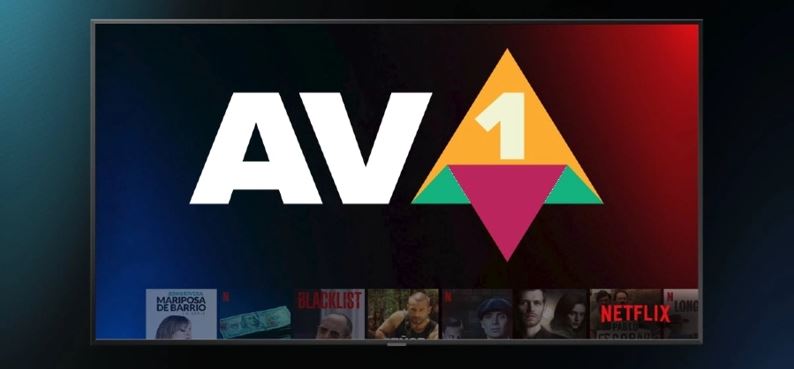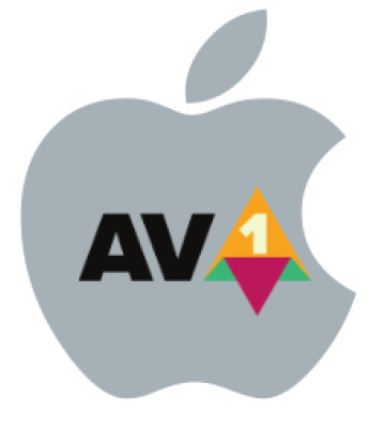Codecs are tools we use to reach our viewers. So, when it comes to codecs, the best ability is play-ability, or the ability to play on the target platforms our viewers prefer to watch. For years, H.264 has remained dominant simply because it played everywhere; but as videos grow larger, faster, and deeper in color, the cost of distributing H.264 is growing too high.
AV1 has leapfrogged VP9 in the so-called “open-source” horse race, while HEVC is the clear successor to H.264 in standards-based codecs, at least for the next 3-4 years as VVC slowly matures. Both AV1 and HEVC have had their well-known Achilles heels: AV1 in the living room and on Apple devices and HEVC in browsers. The last few months have seen critical movement and/or new data in all these platforms that will fundamentally change how we use them going forward.
Contents
AV1 in the Living Room
HEVC has dominated in SmartTVs and OTT dongles since 4K and HDR became must-haves for premium content producers. However, in late 2021, Netflix began distributing AV1 video to this market, and device support has burgeoned since then. As Bitmovin reported in this blog post, AV1 runs on smart TVs running Android TV and Google TV operating systems, including Sony Google TV models from 2021 and forward and many Amazon Fire TV models as far back as 2020. Starting in late 2020, most Samsung TVs have hardware AV1 decoders, with LG also extending support to some TVs as well.

Figure 1. Netflix started the migration of living room content towards AV1. Image from https://www.audioholics.com/hdtv-formats/netflix-av1.
Regarding OTT dongles, the Amazon Fire TV Stick 4K Max and the Roku Streaming Stick 4K and other Roku models support AV1 playback, as does the PlayStation 4 Pro and Xbox One.
The one caveat is that AV1 support for dynamic metadata is nascent. The HDR10+ AV1 Metadata Handling Specification was finalized on December 7, 2022, so it will take a while for encoders and decoders to fully and reliably support it. Dolby Vision still only supports H.264 and HEVC, and may never support AV1, given that Google’s Project Caviar is proposing a royalty-free alternative to Dolby Vision.
To be clear, YouTube supports HDR with AV1, so it’s technically feasible today. But standards like the HDR10+ Metadata Handling Specification promote broad playback compatibility that’s necessary for most publishers to support it. For example, when Netflix first started streaming video to smart TV sets in 2021, it was SDR only, and that’s still the case. Besides, if you’re already encoding your video to HEVC for living room delivery in HDR, it may not make economic sense to reencode to AV1 for slightly more efficient delivery to a market that you’re already serving.
HEVC Plays in Chrome
Browser playback has been a traditional strength of AV1 since it first launched, not surprising given that all major browser developers are members of the Alliance for Open Media. For the same reason, it’s also no surprise that browsers like Chrome and Firefox never supported HEVC, even when hardware or software on the computer or device did support HEVC playback.
This changed in September 2022, when Google “fixed a bug” and enabled HEVC support when the hardware HEVC playback was available on the system. As the story goes, the lack of HEVC playback was reported by Bitmovin as a bug in 2015. Six years later, on September 19, 2022, Google responded, “Enabled by default on all releases.” Within a matter of weeks, browser support for HEVC, as reported in CanIUse jumped from the low 20s to 86.49, well ahead of AV1 at around 73%.
This could be a massive benefit to streaming sites that deliver primarily to computers and mobile devices and had avoided HEVC in the past because of lack of Chrome playback. In one simple bugfix, Google enabled HEVC playback on all supported platforms, including Windows, Mac, iOS, and Android.
A caveat exists here, as well, specifically that “HEVC with Widevine DRM is not supported at this point.” This obviously limits the benefit of Chrome support for premium content producers.
Apple Starts Supporting AV1
Apple has a checkered history with the Alliance for Open Media. When Apple joined in 2018, they big footed their way in as a “founding member,” despite the organization having been formed over two years earlier. Despite this aggressive posturing, Apple has never supported AV1 playback in its operating systems or browsers and was a huge supporter of HEVC.

Figure 2. Apple is now supporting AV1 playback in Safari 16.4.
Apple announced hardware support on all new platforms, mobile, desktop, and living room, as of September 12, 2023. Still, it will take a while for new shipments to dramatically increase the mobile installed base with AV1 decoding hardware. Figure 3 shows the comparative installed base of AV1 vs HEVC in mobile from a report by Scientiamobile.

Figure 3. HEVC currently enjoys much greater hardware support in mobile devices than AV1.
For most companies, this makes HEVC the codec of choice for mobile-targeted video.
IP Issues Become Concerning
The Avanci Video pool, launched in October 2023, covers five key video codecs and standards: H.265 (HEVC), H.266 (VVC), VP9, AV1, and MPEG-DASH. This pool targets Internet video streaming companies, including subscription-based entertainment services, ad-based video-sharing sites, social media platforms, and video conferencing providers. With 26 patent owners participating, Avanci Video aims to offer a comprehensive licensing solution for companies using these technologies in their streaming services.
In a significant legal development, a German court ruled in favor of Broadcom against Netflix, finding that Netflix infringed on a European patent related to HEVC video transmission. The court ordered Netflix to cease streaming HEVC-encoded video, resulting in over $7 million in fines for non-compliance. This case, from which Netflix may appeal, highlights the potential legal risks associated with codec usage in content delivery, even for major streaming platforms.
In October 2023, Nokia filed a lawsuit against Amazon in multiple jurisdictions, including the US, UK, India, Germany, and the European Unified Patent Court (UPC). The lawsuit alleges that Amazon’s video streaming products and services, including Prime Video, Amazon.com videos, and Twitch.tv, infringe on Nokia’s patents related to video compression and encoding standards like H.264 and H.265 (HEVC). This lawsuit is pending as of July 2024.
Though neither of the latter two lawsuits involved AV1, that doesn’t mean AV1 is immune from such content-related suits. Once it’s established that content encoded in a format infringes upon patents relating to that format, and it already might be, I would expect suits for all codecs with valid patents. That said, there were no content-related suits regarding AV1 as of July 2024.
H.264 is a bit more protected because the VIA LA (formerly MPEG LA) H.264 pool excluded free internet video for any royalties and included a small royalty for subscription and pay-per-view that I presume most large publishers are paying. However, any owners of unexpired H.264 patents that weren’t included in the MPEG LA/VIA LA pool wouldn’t be covered by these terms.
The bottom line is that for both HEVC and AV1, there’s a risk of content royalties from Avanci and other patent owners not included in that pool. For more on all these legal issues and more, see here.
 Streaming Learning Center Where Streaming Professionals Learn to Excel
Streaming Learning Center Where Streaming Professionals Learn to Excel








